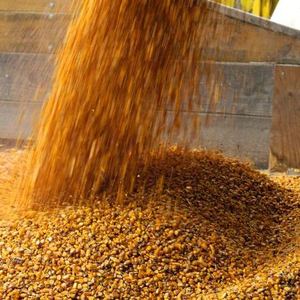USDA: Corn use for fuel ethanol down in December

February 24, 2021
BY Erin Krueger
The USDA recently released its Grain Crushings and Co-Products Production report for February, reporting that corn use for fuel ethanol was at 430 million bushels in December, down from both the previous month and December 2019.
Total corn consumed for alcohol and other uses was at 478 million bushels in December, down less than 1 per cent from the previous month, but down 10 percent when compared to December 2019. Usage included 92.1 percent for alcohol and 7.9 percent for other purposes.
Advertisement
Advertisement
Corn for fuel alcohol was at 430 million bushels, down slightly when compared to November, but down 10 percent when compared to the same month of the previous year. Corn consumed in December for dry milling fuel production and wet milling fuel production was 89.5 percent and 10.5 percent, respectively.
The volume of sorghum consumed for fuel ethanol was in December was withheld to avoid disclosing data for individual operations. Sorghum consumption data was also withheld for the previous month. In December 2019, however, 5.341 million hundredweight (cwt) (299,096 tons) of sorghum was used to produce fuel ethanol.
At dry mills, condensed distillers solubles production was at 76,199 tons, up from 73,803 tons in November, but down from 101,158 tons in December 2019. Corn oil production fell to 159,032 tons, down from both 165,852 tons the previous month and 165,210 tons during the same month of the previous year. Distillers dried grains production fell to 364,532 tons, down from both 372,899 tons in November and 388,156 tons in November 2019. Distillers dried grains with solubles production fell to 1.78 million tons, down from 1.79 million tons the previous month and down from 1.91 million tons in December of the prior year. Distillers wet grains production fell to 1.04 million tons, down from 1.08 million tons the previous month and down slightly when compared to December 2019. Modified distillers wet grains production was at 434,562 tons, up from 421,779 tons in November, but down from 493,170 tons in December 2019.
Advertisement
Advertisement
At wet mills, corn germ meal production fell to 47,715 tons, down from both 53,825 tons the previous month and 68,957 tons in December 2019. Corn gluten feed production increased to 309,298 tons, up from 295,358 tons in November and 306,318 tons in December 2019. Corn gluten meal production increased to 113,754 tons, up from 108,624 tons the previous month and 93,644 tons in December of the previous year. Wet corn gluten feed production fell to 220,505 tons, down from 230,611 tons in November and 257,381 tons in December 2019.
At dry and wet mills, carbon dioxide captured was at 185,563 tons, up slightly from 185,219 tons the previous month, but down from 202,510 tons in December 2019.
Related Stories
The USDA significantly increased its estimate for 2025-’26 soybean oil use in biofuel production in its latest World Agricultural Supply and Demand Estimates report, released July 11. The outlook for soybean production was revised down.
The U.S. Energy Information Administration maintained its forecast for 2025 and 2026 biodiesel, renewable diesel and sustainable aviation fuel (SAF) production in its latest Short-Term Energy Outlook, released July 8.
XCF Global Inc. on July 10 shared its strategic plan to invest close to $1 billion in developing a network of SAF production facilities, expanding its U.S. footprint, and advancing its international growth strategy.
U.S. fuel ethanol capacity fell slightly in April, while biodiesel and renewable diesel capacity held steady, according to data released by the U.S. EIA on June 30. Feedstock consumption was down when compared to the previous month.
XCF Global Inc. on July 8 provided a production update on its flagship New Rise Reno facility, underscoring that the plant has successfully produced SAF, renewable diesel, and renewable naphtha during its initial ramp-up.
Upcoming Events










